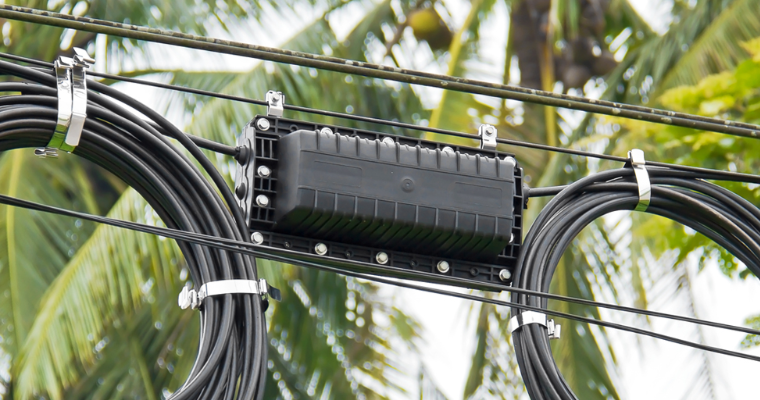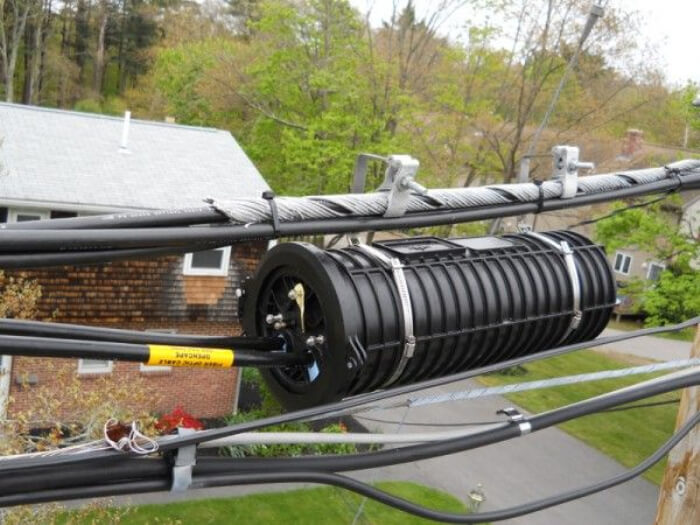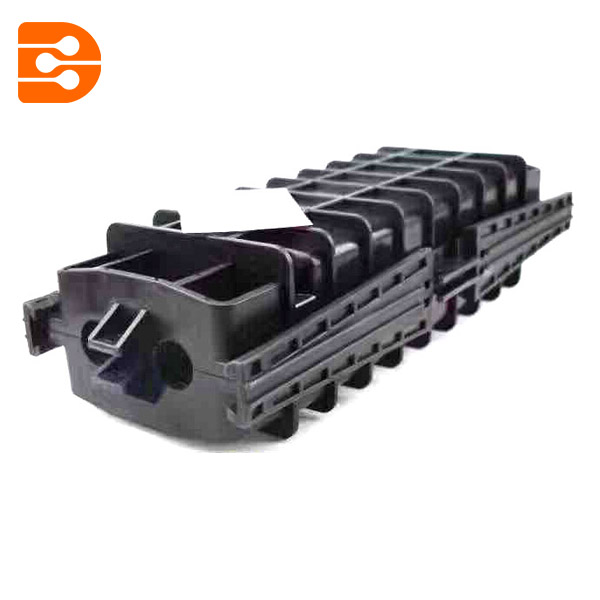Maintaining a fiber optic splice closure is crucial for ensuring network reliability and long-term performance. Neglecting maintenance can lead to signal loss, costly repairs, and operational inefficiencies. Regular inspections, such as checking seals and cleaning splice trays, prevent issues. Best practices, like using a weatherproof fiber optic closure, enhance durability and functionality. Additionally, choosing between a heat shrink fiber optic closure and a mechanical fiber optic closure can impact the effectiveness of your network. For specific applications, a vertical splice closure may be the ideal solution to ensure optimal performance.
Key Takeaways
- Taking care of fiber optic closures stops expensive fixes and keeps networks working well.
- Check them often to find problems early, like broken seals or crooked splices, to stop network issues.
- Use strong products like Dowell to make them last longer and need less fixing.
Why Maintenance of Fiber Optic Splice Closure Matters
Consequences of Poor Maintenance
Neglecting the maintenance of a fiber optic splice closure can lead to significant issues that compromise network performance. Poorly maintained closures often allow moisture and dust to infiltrate, which can degrade fiber connections and result in signal loss. Misaligned splices or damaged seals may cause intermittent disruptions, leading to unreliable communication channels. Over time, these problems escalate, requiring costly repairs or even complete replacements of network components.
Additionally, environmental factors such as extreme temperatures, UV exposure, and physical stress can exacerbate the deterioration of poorly maintained closures. Without regular inspections, these vulnerabilities remain undetected, increasing the risk of network downtime. For organizations relying on uninterrupted connectivity, such disruptions can lead to operational inefficiencies and customer dissatisfaction.
Benefits of Regular Maintenance for Network Longevity
Regular maintenance of fiber optic splice closures ensures long-term network reliability and performance. Inspections help identify potential issues early, such as worn seals or misaligned splices, preventing costly repairs. Proper sealing and cable management protect against environmental threats, ensuring the integrity of fiber connections even in harsh conditions.
Investing in high-quality closures and maintaining them reduces long-term costs by extending the lifespan of the network. Durable designs, combined with routine upkeep, minimize downtime and enhance operational efficiency. Organizations benefit from improved customer satisfaction and lower operating expenses, as reliable networks require fewer emergency repairs. By prioritizing maintenance, businesses can safeguard their infrastructure and ensure consistent performance.
Tip: Schedule regular inspections and use durable closures to prevent environmental damage and maintain optimal network functionality.
Common Issues in Fiber Optic Splice Closure and Solutions
Preventing Moisture Infiltration
Moisture infiltration is a common issue that can severely impact the performance of a fiber optic splice closure. Water entering the closure can corrode internal components and degrade fiber connections, leading to signal loss. Proper sealing is essential to prevent this issue. Using closures with high-quality gaskets and ensuring all entry points are tightly sealed can protect against water ingress. Regular inspections should focus on identifying worn seals or cracks in the closure housing.
Managing Cable Strain and Stress
Excessive cable strain can damage fibers and compromise network performance. Strain often results from improper installation, overcrowding, or tight bends. To address this, technicians should secure cables properly and maintain the recommended bend radius. Closures designed to accommodate temperature variations can prevent material distortion. Additionally, organizing fibers within the closure reduces tension and simplifies maintenance.
| Issue | Solution |
|---|---|
| Overcrowding or excessive tension | Rearrange fibers and maintain proper bend radius. |
| Temperature-induced material distortion | Use closures rated for the operational temperature range. |
| Improper installation | Secure cables and provide adequate strain relief. |
Addressing Misalignment of Splices
Misaligned splices can cause significant signal loss. This issue often arises during installation or due to thermal changes. Regular calibration of splicing equipment ensures precise alignment. Technicians should inspect and reposition fibers during maintenance to correct any misalignment. Even slight core misalignment can degrade signal strength, emphasizing the need for meticulous splicing techniques.
Protecting Against Environmental Damage
Environmental factors such as UV exposure, extreme temperatures, and physical impacts can damage closures. Selecting closures made from durable, weather-resistant materials minimizes these risks. Proper installation techniques, including securing closures in protected locations, further enhance their resilience. Regular maintenance helps identify and address early signs of environmental wear, ensuring long-term performance.
Tip: Use closures designed for specific environmental conditions to maximize durability and reliability.
Preventive Maintenance Practices for Fiber Optic Splice Closure
Conducting Regular Inspections
Routine inspections play a critical role in maintaining the performance of a fiber optic splice closure. Technicians should visually examine closures for physical damage, pollutants, or moisture. These inspections help detect early signs of wear, such as deteriorated seals or loose bolts, which could compromise the closure’s integrity. Identifying these issues early prevents costly repairs and ensures reliable network performance. Ensuring all seals remain intact is particularly important, as even minor failures can lead to significant signal degradation.
Ensuring Proper Sealing and Waterproofing
Proper sealing and waterproofing are essential to protect closures from environmental threats. High-quality materials, such as heat-shrink or gel-based seals, provide robust protection against moisture and dust infiltration. Advanced gaskets and clamps enhance mechanical sealing, ensuring long-term durability. The table below highlights the benefits of different sealing advancements:
| Advancement Type | Description | Impact on Maintenance |
|---|---|---|
| Heat-shrink sealing | Provides protection against moisture and dust. | Reduces maintenance needs due to enhanced sealing. |
| Gel-based sealing | Improves resistance to extreme temperatures. | Increases durability and reliability of closures. |
| Advanced gaskets/clamps | Enhances mechanical sealing capabilities. | Guarantees longevity and reusability of closures. |
Managing Environmental Factors
Fiber optic splice closures must withstand various environmental conditions. Closures designed with durable, weather-resistant materials can endure strong winds, vibrations, and extreme temperatures. Optimized seals and gaskets prevent environmental degradation, such as salt spray or UV exposure. Regular maintenance ensures closures remain resilient, even in harsh outdoor installations. For example, closures constructed from temperature-resistant materials maintain stability across a wide range of operating conditions, reducing the risk of material expansion or brittleness.
Cleaning and Replacing Worn Components
Cleaning and replacing worn components are vital for maintaining the functionality of a fiber optic splice closure. Technicians should regularly clean splice trays and fibers to remove dust and debris. Inspections should also focus on identifying worn sealing elements, which may require replacement to maintain reliable connectivity. Routine maintenance prevents signal loss and ensures the network operates at peak performance. By addressing these tasks proactively, organizations can extend the lifespan of their infrastructure and reduce downtime.
Tip: Schedule regular cleaning and component replacement to prevent performance issues and maintain network reliability.
Tools and Equipment for Fiber Optic Splice Closure Maintenance
Essential Tools for Maintenance
Maintaining a fiber optic splice closure requires specialized tools to ensure precision and efficiency. These tools simplify tasks such as splicing, sealing, and inspecting closures, reducing downtime and operational costs. Essential tools include:
- Fiber optic cleavers: Ensure clean and accurate fiber cuts for optimal splicing.
- Fusion splicers: Provide precise alignment and permanent fiber connections.
- Cable strippers and slitters: Facilitate safe removal of cable jackets without damaging fibers.
- Sealing kits: Include gaskets and heat-shrink tubing to protect closures from environmental threats.
Using these tools leads to long-term savings by minimizing maintenance costs and preventing signal loss. Proper installation and regular inspections with these tools help identify issues like misaligned fibers and environmental damage, ensuring reliable connectivity.
Using Dowell Products for Effective Maintenance
Dowell products are designed to enhance the efficiency and durability of fiber optic splice closures. Their features include:
| Feature | Description | Benefit |
|---|---|---|
| Durability | Combines robust materials with a compact design. | Protects splices from environmental factors. |
| User-friendly design | Rotatable splice trays simplify maintenance tasks. | Reduces downtime and operational costs. |
| IP67 sealing structure | Prevents dust and water ingress. | Suitable for indoor and outdoor use. |
| Fiber capacity | Supports up to 48 fibers. | Enhances network scalability. |
These features make Dowell products ideal for maintaining both small-scale and large-scale networks. Their user-friendly design ensures technicians can perform maintenance efficiently, even in challenging environments.
Safety Equipment and Best Practices
Safety is paramount when working with fiber optic splice closures. Technicians should use:
- Safety glasses: Protect eyes from fiber shards during splicing and cutting.
- Gloves: Prevent injuries and contamination of fiber components.
- Fiber disposal units: Safely collect and dispose of fiber scraps.
Best practices include maintaining a clean workspace, following manufacturer guidelines, and using tools designed for fiber optic applications. Adhering to these practices ensures technician safety and prevents damage to network components.
Tip: Always inspect safety equipment before use to ensure it functions properly.
Best Practices for Long-Term Performance of Fiber Optic Splice Closure
Establishing a Maintenance Schedule
A well-defined maintenance schedule is essential for ensuring the long-term performance of a fiber optic splice closure. Regularly scheduled inspections and upkeep reduce downtime, lower maintenance costs, and extend the lifespan of network components. Research highlights that consistent maintenance enhances network reliability by addressing issues such as worn seals and misaligned splices before they escalate.
| Aspect | Initial Cost | Long-term Savings |
|---|---|---|
| Maintenance Costs | Higher | Reduced over time |
| Downtime | Higher | Decreased significantly |
| Lifespan | Shorter | Extended with maintenance |
Organizations can use this data to justify the investment in routine maintenance, ensuring uninterrupted connectivity and cost efficiency.
Training Technicians for Proper Handling
Proper training equips technicians with the skills needed to handle fiber optic components effectively. Without adequate training, errors during installation or maintenance can lead to costly network failures. Specialized courses, such as those offered by technical schools, provide hands-on experience in fiber optic installations. The Fiber Optic Association has documented numerous cases where untrained personnel caused significant disruptions due to improper handling.
Training programs should focus on splicing techniques, sealing methods, and the use of advanced tools. By investing in technician education, organizations can minimize errors, reduce repair costs, and maintain the integrity of their fiber optic splice closures.
Choosing High-Quality Products like Dowell
High-quality products play a pivotal role in maintaining the performance of fiber optic splice closures. Brands like Dowell offer closures made from durable materials that resist environmental damage. Their designs include features such as enhanced sealing to prevent moisture infiltration and minimize signal loss. These attributes ensure reliable performance, even in harsh conditions, while reducing the need for frequent maintenance.
By selecting premium products, organizations can achieve long-term savings and maintain network stability. Dowell’s reputation for quality makes it a trusted choice for both small-scale and large-scale installations.
Documenting Maintenance Activities
Documenting maintenance activities provides a clear record of inspections, repairs, and replacements. This practice helps technicians track the condition of fiber optic splice closures and identify recurring issues. Detailed records also support compliance with industry standards and facilitate future maintenance planning.
Organizations should implement a standardized documentation process, including dates, performed tasks, and observed issues. This approach ensures accountability and enables data-driven decisions to optimize network performance.
Consistent maintenance of fiber optic splice closures ensures network reliability and reduces costly downtime. Following best practices, such as regular inspections and proper sealing, enhances performance and extends the lifespan of network components.
Recommendation: Implement these strategies and choose Dowell products for durable, high-quality solutions that support long-term network efficiency.
FAQ
What is the lifespan of a fiber optic splice closure?
The lifespan depends on environmental conditions and maintenance. With proper care, high-quality closures like Dowell products can last over 20 years, ensuring reliable network performance.
How often should fiber optic splice closures be inspected?
Technicians should inspect closures every six months. Regular inspections help identify issues like worn seals or misaligned splices, preventing costly repairs and network disruptions.
Can damaged closures be repaired, or should they be replaced?
Minor damages, such as worn seals, can often be repaired. However, severely damaged closures should be replaced to maintain network integrity and prevent further performance issues.
Tip: Always consult manufacturer guidelines to determine whether repair or replacement is the best option for your closure.
Post time: Mar-26-2025



